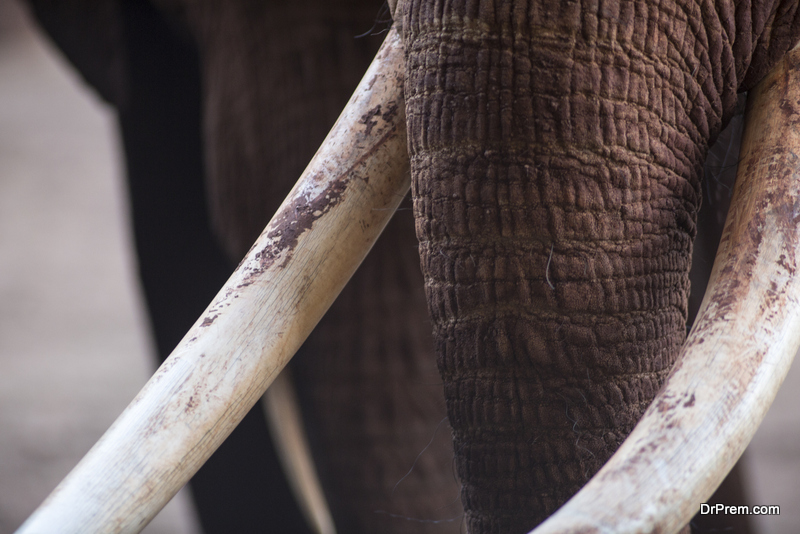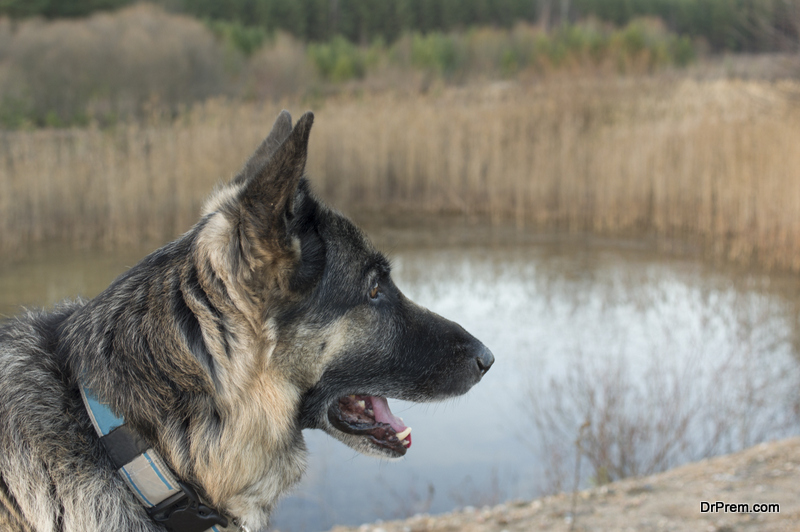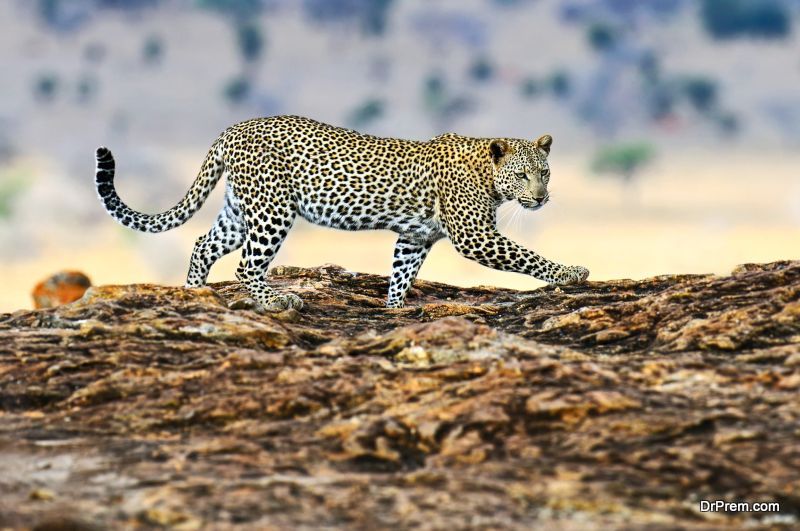Travelers setting out for Africa often look forward to glimpsing the continent’s sprawling grasslands, where wildlife – both flora and fauna – can thrive freely. Among the most famous of these is the Maasai Mara in Southwest Kenya, covering around 583 square miles or 1,510 square kilometers. Known as one of the world’s top wildlife refuges, the Maasai Mara features a flat landscape that’s marked with occasional trees, bushes, and boulders. This set makes it perfect for wildlife viewing.
There are plenty of reasons why the abundant and diverse wildlife contributes to the Kenya tourism industry, bringing in billions of dollars every year. Visitors who embark on safaris can witness firsthand a surprising variety of animals, including the “big five” (lions, leopards, rhinos, elephants, and buffalos), along with cheetahs, zebras, gazelles, and more than 400 species of birds. What’s especially spectacular is the annual wildebeest migration, where over one million wildebeests brave the long trek from Tanzania to Kenya. Aside from enjoying the outdoors, visitors can also learn more about the Maasai people, a semi-nomadic warrior tribe that has managed to preserve Kenyan culture.
However, even though the Maasai Mara reflects nature’s ways–which seem as old as time—it’s possible that it won’t always be like this.A BBC report from 2011 observes that wildlife populations have plunged significantly, by as much as 70 percent for species such as impalas and giraffes. Domestic livestock is one factor, but there’s another that’s man-made and just as devastating: poaching.
Poaching as a Threat
Poaching in the Maasai Mara has been illegal for years, with a hefty punishment that can reach $200,000 or lifetime imprisonment. Despite strict laws, it continues to be rampant and hasn’t been easy to reign in at all. Poaching can occur for the sake of subsistence—animals and plants are obtained for food—but the more insidious type that causes large-scale damage stems from a different motive altogether: profit.
According to awildlife protection report, poachers tend to be locals who are extremely familiar with the area. Instead of acting independently, they gain support, information, and equipment from middlemen and patrons. This gives them the advantage of being stealthy and well-prepared, capable of efficiently hunting for wildlife while evading rangers.
Poachers are mainly involved in the bushmeat trade, and their preferred method involves setting up hundreds of wire snares to catch smaller game animals such as gazelles and buffaloes. An additional tragic consequence is that elephants, lions, and leopards can accidentally get trapped and killed as well. Alternatively, poachers may attack animals directly with machetes or spears. But as aggressively as they treat wildlife, they aim to stay undercover; and would rather flee than risk arrest by rangers.
 Elephants are a special target because of their ivory tusks. At least 20,000 elephants were killed illegally in Africa back in 2015, all to fuel the ivory trade, and it’s likely that the number of elephant babies born yearly isn’t compensating for the rate of carnage. Ivory is highly valued in certain parts of Asia as a symbol of wealth, and merchants are willing to pay exorbitant prices for it. Although China—one of its biggest markets—has recently banned ivory trade and ivory trafficking is illegal in Maasai Mara, it persists amidst gaps in security and government corruption. Rhinoceroses meet a similar fate, since their horns are also sold in Asia as ingredients for traditional medicine.
Elephants are a special target because of their ivory tusks. At least 20,000 elephants were killed illegally in Africa back in 2015, all to fuel the ivory trade, and it’s likely that the number of elephant babies born yearly isn’t compensating for the rate of carnage. Ivory is highly valued in certain parts of Asia as a symbol of wealth, and merchants are willing to pay exorbitant prices for it. Although China—one of its biggest markets—has recently banned ivory trade and ivory trafficking is illegal in Maasai Mara, it persists amidst gaps in security and government corruption. Rhinoceroses meet a similar fate, since their horns are also sold in Asia as ingredients for traditional medicine.
All in all, poaching poses a serious threat to the Maasai Mara ecosystem. It’s yet another example of human beings ravaging nature and leaving it worse off. On another level, the Kenyan government is motivated to care because wildlife conservation—and the tourism it brings—racks in at least 10 percent of the country’s GDP, meaning that the loss of wildlife will eventually translate into an economic blow.
Current Solutions
Ever since the Maasai Mara was established in 1961, the government and local tourism industry have strived to eliminate poaching by enforcing bans and penalties and allowing some parts of the land to be divided into private conservancies, which are managed by wildlife experts. The following initiatives have further helped a great deal in deterring poaching:
1. Rangers and Scouts
Teams consisting of rangers and scouts regularly roam the vast spaces, deactivating snares and looking out for illegal poachers. They collaborate extensively with members of the local community, who are privy to insider information. Because of these patrols, many poachers have been discouraged from trying, and most incidents are handled real-time, even escalating into arrests or shoot-outs.
2. Searcher dogs

Tracker dogs are an effective addition to ranger teams. Because poachers move quickly, pinning down their exact location is a challenge, especially after several hours. When responding to leads and reports, rangers can work alongside tracker dogs, who use scent to figure out the path taken by poachers. This has resulted in faster arrests and decreased incidents—poachers have less of a chance to escape.
3. Technology
To enhance detection and fight against poaching, the World Wildlife Fund (WWF) came up with the Wildlife Crime Technology Project. Reserves in the Maasai Mara have been putting this to good use through infrared thermal cameras that identify movement through body heat and silhouettes and send out alerts. These provide heightened visibility during nighttime, which is when poachers prefer to emerge.
Alongside these, the government fosters community engagement and engages in environmental awareness campaigns. It’s also considering tightening the belt on its poaching laws—if lifetime imprisonment isn’t intimidating enough, then perhaps death penalty will suffice. The Maasai Mara is a wonder of untouched nature, after all, and it’s our responsibility to make sure that, at the very least, we let it flourish rather than destroying it.
The tourism industry is doing a lot to combat this – because it’s their daily bread, but also because the local people and business owners care about their home and their children’s future and heritage. There are a lot of ecological Kenyan safari lodges that carry on the torch of conservancy themselves – and get involved in various social and environmental programs. You can help too, by doing research before you book a trip and seeing if your host is known for their charity or conservation work. They might teach you more than an average hotel!
Article Submitted By Community Writer



